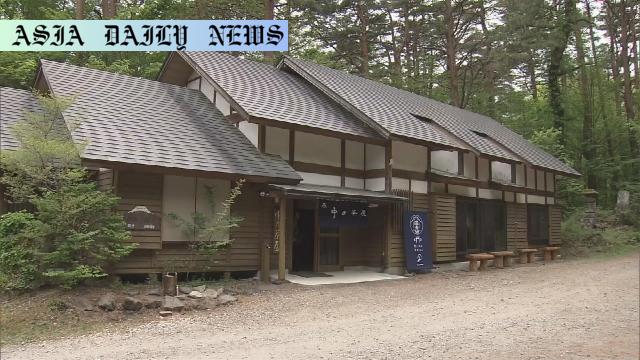Mt. Fuji: Fujiyoshida City opens remodeled cabin with modern amenities and promotes tourism around historic trail sites.
Fujiyoshida City remodels Nakanochaya teahouse to enhance tourism.
The cabin offers internet, resting space, dining, and showers.
Plans include promoting shrines, historic sites, and beautification.

Introduction: Revitalizing Tourism at Mt. Fuji
Fujiyoshida City in Yamanashi Prefecture, Japan, has embarked on an ambitious project to boost tourism by remodeling a historical cabin located on the Yoshida Trail at the foot of Mount Fuji. This endeavor aims to reconnect visitors with the natural beauty and cultural significance of the area, particularly focusing on the stretch between the trail’s gate and the first station. By integrating modern amenities and highlighting local history, the project seeks to rejuvenate interest in this iconic region.
Modern Upgrades at Nakanochaya Teahouse
A key element of this initiative is the refurbishment of the Nakanochaya teahouse, a symbolic site along the Yoshida Trail. This remodeled cabin now boasts a range of modern facilities designed to accommodate today’s travelers. Visitors can access online services, enjoy a spacious resting area, and dine on Fujiyoshida City’s famous specialty, udon noodles. Additionally, rental services for trekking and running shoes are available, making it easier than ever for adventurers to explore the trail. After a long hike, the inclusion of a modern shower room ensures that trekkers can freshen up and relax.
Addressing Challenges on the Yoshida Trail
One of the main challenges Fujiyoshida faces is attracting visitors to the trail between the gate and the fifth station, especially after the inauguration of the Fuji Subaru Line toll road. This road now connects the base of Mount Fuji to the fifth station, diverting many tourists away from the lower stretches of the Yoshida Trail. To counter this trend, city officials are focusing on enhancing the overall visitor experience. Beautification efforts along the trail and promotional campaigns emphasizing its cultural landmarks, such as shrines linked to Mount Fuji’s history, are central to these efforts.
The Cultural and Historical Appeal of Mt. Fuji
Beyond its natural beauty, Mount Fuji carries significant cultural and historical value. The Yoshida Trail is steeped in centuries of tradition, serving as a vital pilgrimage route. By promoting the area’s shrines and historical sites, Fujiyoshida hopes to educate visitors about Mount Fuji’s rich heritage. This effort aligns with broader trends in tourism, where travelers increasingly seek immersive cultural experiences alongside natural exploration.
Conclusion: Setting a New Standard for Tourism
With the reopening of the Nakanochaya teahouse and a cohesive plan to promote the Yoshida Trail, Fujiyoshida City exemplifies how thoughtful innovation can breathe new life into longstanding attractions. By blending old and new, the city not only hopes to attract more adventurers but also ensures that Mount Fuji’s unique cultural and historical essence remains at the forefront of its appeal. This initiative is a promising step in sustaining tourism in an area that holds a special place in the hearts of both Japanese and international travelers.



Commentary
Importance of Preserving and Promoting Mount Fuji
Mount Fuji is more than just Japan’s tallest mountain; it is a cultural icon recognized worldwide. Projects like the refurbishment of the Nakanochaya teahouse exemplify the importance of preserving and enhancing iconic locations for future generations. This initiative by Fujiyoshida City aligns perfectly with modern tourism trends, emphasizing a balance between cultural heritage and traveler convenience. By executing such thoughtful projects, the city not only modernizes its offerings but also reminds visitors of the historic and cultural significance of their surroundings.
Challenges and Solutions in Sustainable Tourism
One of the challenges facing the region is ensuring that tourism remains sustainable without overshadowing the local culture or causing significant environmental harm. The Nakanochaya project incorporates several sustainable solutions, such as promoting local food, renting hiking gear, and maintaining trail cleanliness. These efforts illustrate a commendable commitment to fostering eco-friendly tourism while showcasing the area’s rich culture. Such initiatives serve as a model for other regions struggling to balance modernization with cultural preservation.
A Positive Vision for the Future
The blend of cultural preservation and innovative facilities at Mount Fuji represents an ideal vision for future tourism projects worldwide. By rejuvenating traditional sites and actively promoting their historical essence, locations like Fujiyoshida can attract a diverse range of tourists. Whether it’s an adventurous trekker or a history enthusiast, everyone can find something meaningful in these experiences. Every step taken, from beautifying trails to creating modern facilities, ensures progress while honoring the past.